General Strategies and Deck Archetypes in TCGs
Not everyone is a Trading Card Game pro player just yet (but very soon!), so with that in mind we would like to introduce you to a very important aspect of playing TCGs by presenting you with some of the general playing strategies in card matches. Knowing about these different approaches to playing your cards will benefit you immensely in your deck building journey and will give you the opportunity to carefully choose how to build your first deck, so that it suits your favourite playing style. Furthermore you will gain a better understanding about the varied approaches to playing TCGs and will come to appreciate how much fun experimenting with and customising your deck is!
This article will introduce you to three different playing strategies and concepts, give you examples of the syndicates that most resonate with a given playing strategy and additionally introduce you to some of the general deck archetypes and provide some tips on what to look out for when building your deck!
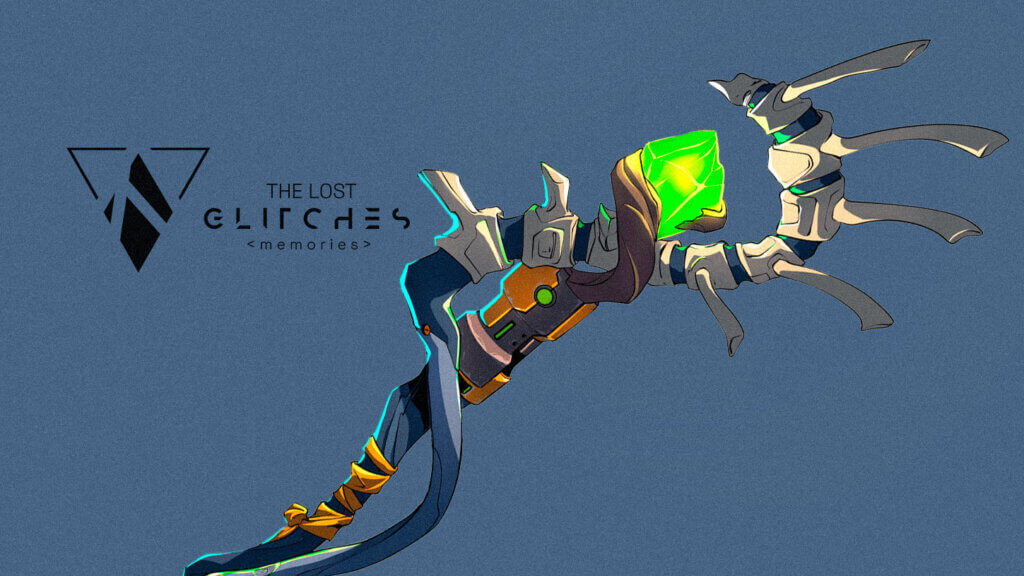
How do you define Early-, Mid-, and Late-Game?
You have probably come across the terms early-, mid- and late-game when reading about the descriptions of the syndicates inhabiting the Deep Sky Network and their different playing styles but you may have wondered what they exactly mean. Worry not, this article will get you up to speed!
Let’s go into a brief description of each term and start joining the ranks of well-informed TCG players together! Please note that the terms are fluid and the borders between each phase of a match is not set in stone. They are also different for each TCG out there but for the sake of simplicity and easy understanding let’s assume a match lasts 30 turns. In reality it will probably be slightly different and we look forward to establishing the different phases of The Lost Glitches game together with you during our upcoming beta testing phase!
Alright, without further ado, let’s dive straight into the different general playing strategies of competitive TCG matches.
Early-game
Early-game refers to the first few turns of the game. In a match that lasts about 30 turns, early game would roughly correspond to the first 7 turns. An early-game strategy is all about overpowering your opponent from the very beginning of the match.
A type of deck that supports an early-game strategy is called an aggro deck, which we will talk about as we get further into the article and present to you the different general deck archetypes. The syndicate most resonating with an early-game strategy are the Curators Maxima.
Mid-game
Mid-game refers, as the term would suggest, to the phase between the early game and endgame phase and in our example of 30 turns would be starting around turn 7 and last until approximately turn 18. A mid-game strategy seeks to build up powerful attack opportunities to be played after the initial starting phase (early-game) is over. Bear in mind that it is a relative term and that different decks, minor tweaks to a deck and playing style can all have an influence as to when your deck hits its mid-game capabilities.
A deck that supports a mid-game strategy is called a Midrange deck. The Guardians of the Source are the syndicate that is most aligned with this strategic approach.
Late-game
Late-game is all about attempting to survive until the late stages of the game in order to play maximally powered up cards and synergies for ultimate value and devastation of enemy forces. It takes place in the last turns of a match, roughly between turns 19 to 30 in the example length of a match we are working with here for illustrative purposes. A late-game strategy aims to hold back the enemy in what could be described as a war of attrition in order to slowly but surely build up the capacity to play very powerful attacks at the last turns of the match.
Decks that are suited for a late-game strategy are called Control decks. The Deep Sky syndicate that best aligns with this type of strategy are the Adamant Hands.
Types of decks
Let’s talk about the different archetypes of decks and connect them to the general playing strategies of TCGs.
Aggro
An aggressive type of deck that seeks to inflict as much damage as possible on the opponent from the very start of the match and defeat the enemy in only a few turns at the beginning of the game round. Aggro decks are most suited for players following an early game strategy that seeks to overpower and overwhelm the opponent in lieu of following a longer term plan. They often rely on creatures that can be spawned simultaneously or in quick succession to outnumber the other side. Any attempt by the opponent to build up resistance and attack power for a mid- or late-game approach is being inhibited and sabotaged by aggro deck players leading to quick wins and relatively short rounds.
A syndicate that lends itself well for an aggro deck and early-game strategy are the Curators Maxima. Their playing style is inspired by DDoS attacks (which are attacks that are designed to overwhelm a given system by the sheer number of possible attack vectors), as well as worm viruses. The Curators are very strong in numbers and can spawn multiple creature Glitches in one round.
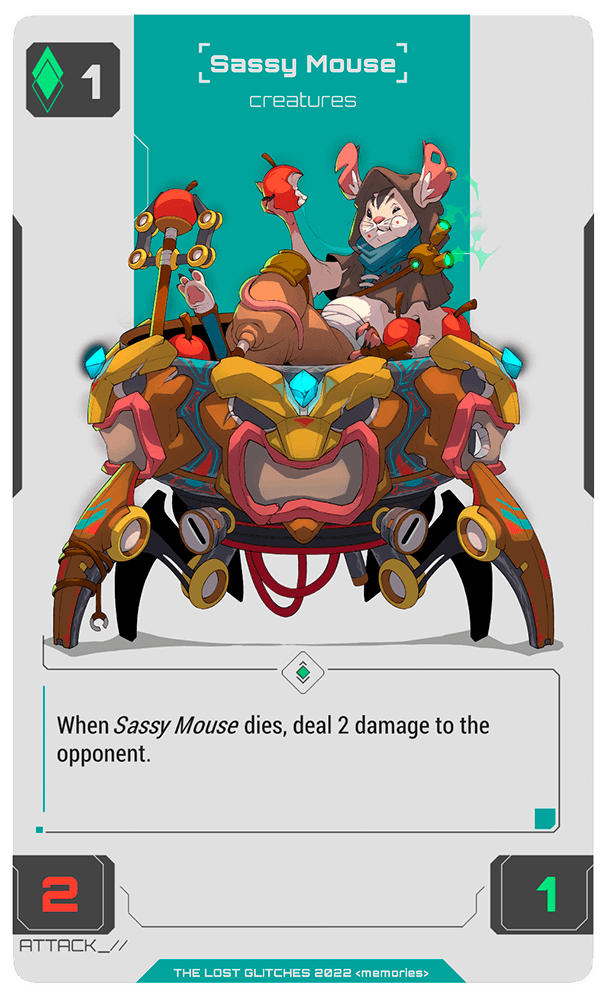
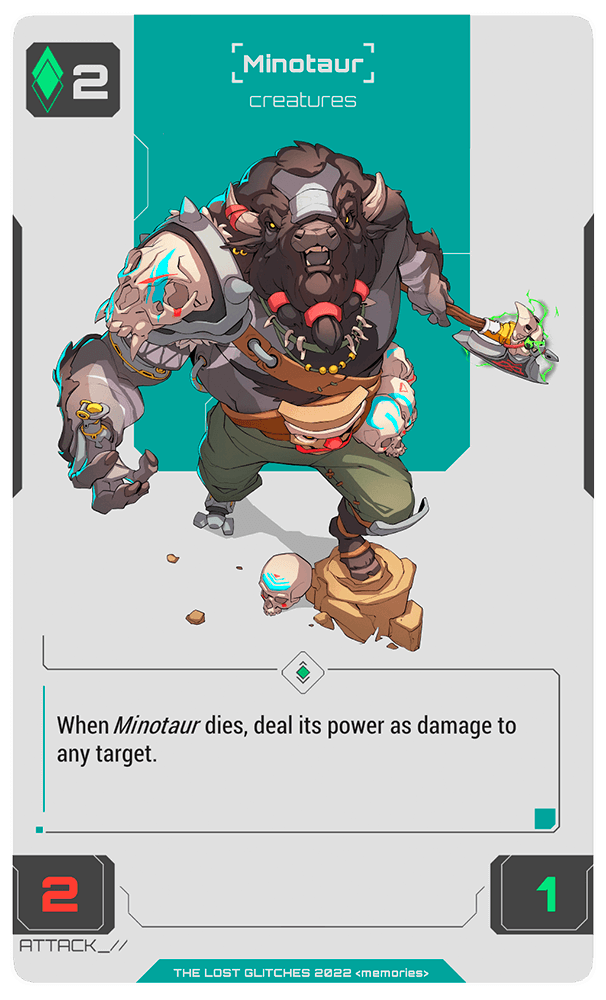
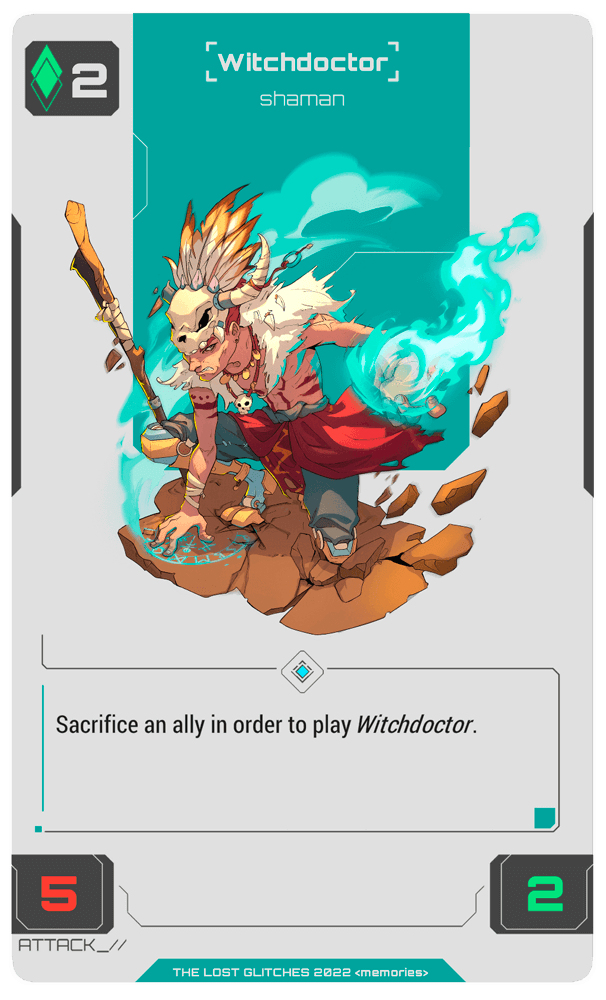
Midrange
Usually a midrange deck has an early game plan of controlling the opponent and gaining a lot of energy in the first few turns. When this type of deck reaches a medium amount of energy it will start to play strong and threatening attacks. Usually a midrange deck will want to play a reactive game against aggro decks that is based on attrition and a much more proactive and fast game against control decks.
The Guardians of the Source are a great choice for building a Midrange deck and following a mid-game strategy with. They have a defending playing style that is inspired by telecommunications hacking (phreaking) of the 1960s – 1970s. Guardians of the Source turn the opponent’s own allies against them. They control the battlefield by stealing their opponent’s assets and sacrificing them for even bigger threats. Towards mid-game they become very powerful and their fierce and legendary Glitches are able to triumph over adversaries with ease.
Control
Control decks are all about taking it slow and sabotaging the opponents efforts to gain momentum. They do that by executing an attrition plan. Attrition refers to a gradual reduction in enemy numbers or strength because of constant stresses on the opponent that does not give the enemy a chance to play any meaningful or powerful counter attacks. As the match progresses this type of deck is able to play their slower but more powerful cards to its advantage. Control decks succeed if they can answer threats at a reduced cost, for example by answering and defeating multiple threats with only one card or ability. They also try to avoid playing threats that can be answered during early- or mid-game and by that devalue the usefulness of their opponents cards that could answer them. Furthermore they aim to disrupt any synergies between the cards on the opposing side of the battleground. And finally a control deck following a late-game strategy drags the game out considerably, making any of the enemy”s faster and efficient cards to be played in early- or mid-game much less effective for the late endgame phase of a match.
Song of the Chain are a very good choice to build a Control deck with because they can force their opponent to discard or diminish the usefulness of their battlefield assets and are all about playing tricks and creating dilemmas that disable the opponent’s play. The dilemmas force the enemy to choose between two evils, for example affecting how much things cost to initialise or having their units converted to fight for the opposing side.
That makes Song of the Chain great in long game sessions, where they are able to deplete an opponent’s resources until they launch a devastating end game attack.
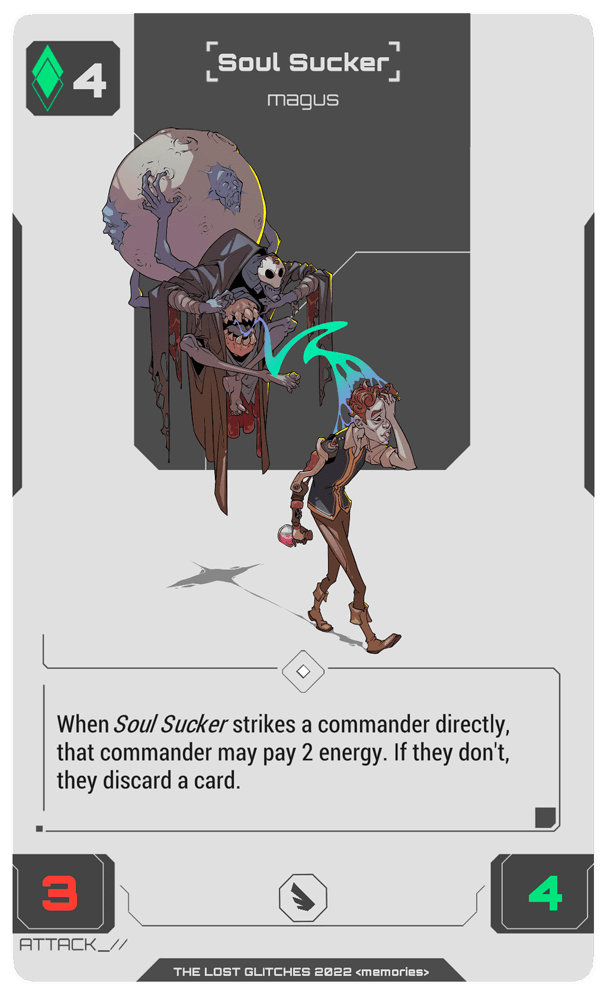
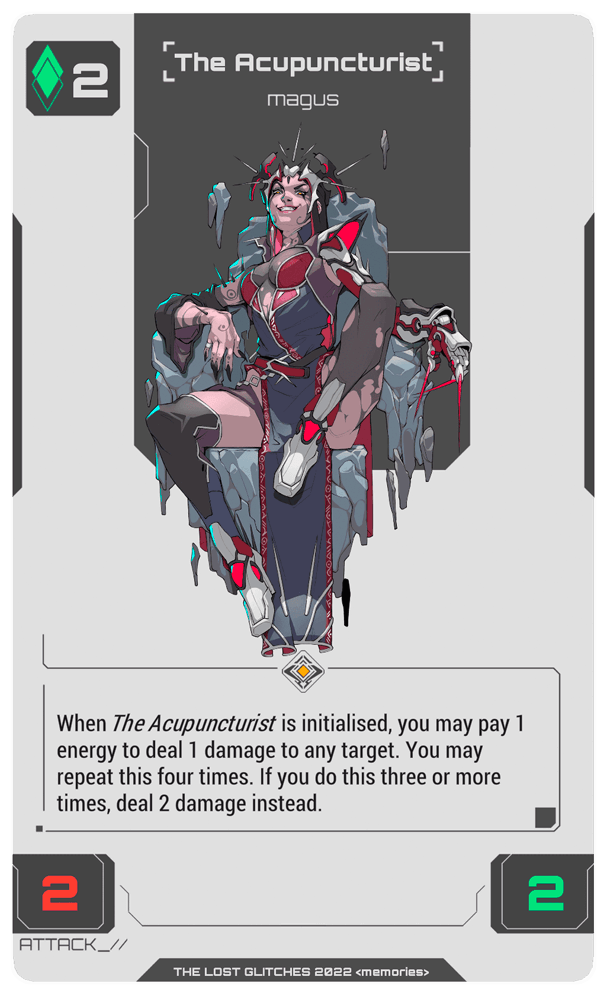
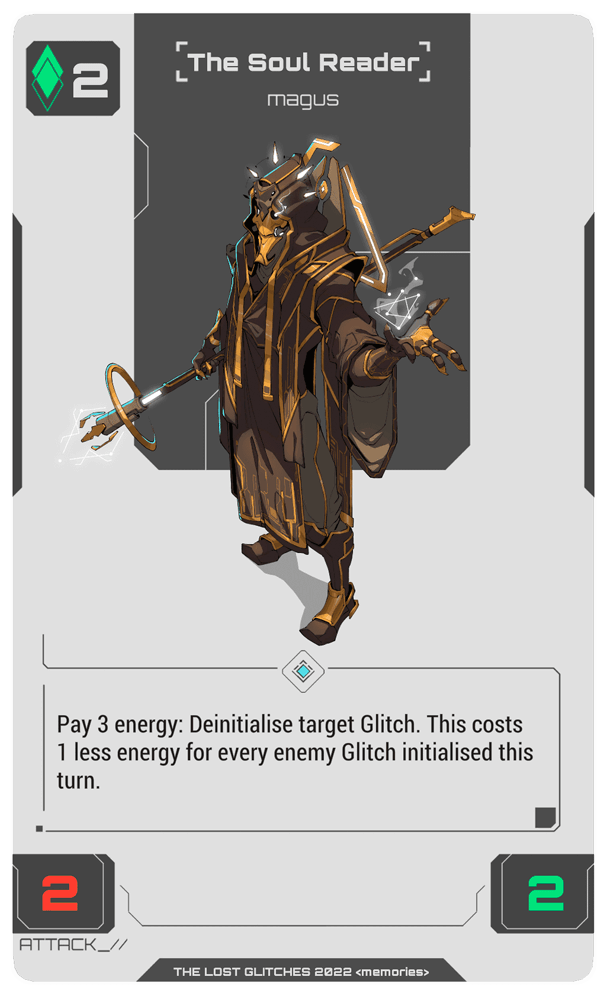
Other types of decks
There are of course other advanced playing strategies and decks, for example Combo decks, which are decks that rely on very strong card synergies. And then there are also hybrid decks. You could build an Aggro-Control, Control-Combo, Aggro-Combo or even an Aggro-Control-Combo deck for example. The ability to experiment with your deck and opportunities for tweaking it until you find a playing style that best suits you, is one of the key elements that make deckbuilding and TCGs so much fun. The (Deep) Sky’s the limit!
Last but not least there are also deck types and builds that are aiming to provide a more casual and fun experience, for moments where it is not really about competition and winning per se but more about playing a fun game with one of your friends. There are even Gimmick decks that are all about forcing a very specific and somewhat funny showdown that can be really fun to play but they are often not that effective as the chance to play the gimmick is very narrow and depends on several factors that are often outside the players control, but when it hits, then it really hit and often in quite hilarious ways.
You can look forward to exploring, building and discussing more decks and variants of advanced hybrid decks in future articles and can even get involved in finding some of the best deck builds together with us during the private beta that is to start in Q1 this year. Priority access will be given to our most involved and loyal supporters until we gradually roll out access to include even more people. We cannot wait to start this amazing adventure together with you, our awesome community! Together we will conquer the Deep Sky Network and beyond!
Card Synergies
Another important aspect to consider when building your deck are card synergies. You do not have to strictly follow either one of the above mentioned general strategies to take advantage of cards that greatly complement each other and create powerful synergistic effects that tear through your opponent’s defences or create other powerful effects that benefit you on your way to victory. Extremely powerful synergies that can win a game instantly are the key to success when building a Combo deck, which we look forward to presenting you with in a future article. However, synergetic effects do not always have to be game winning and paying attention to which cards work well when they are played together can definitely benefit and give you an edge.
Take a look at Legion Disciple and Bushido High Practitioner for an example of a great card synergy. When both cards are on the battleground, every time you attack your enemy with the Bushido High Practitioner, the Legion Disciple automatically gets +1/+1 which if successfully done several times greatly powers that card up.
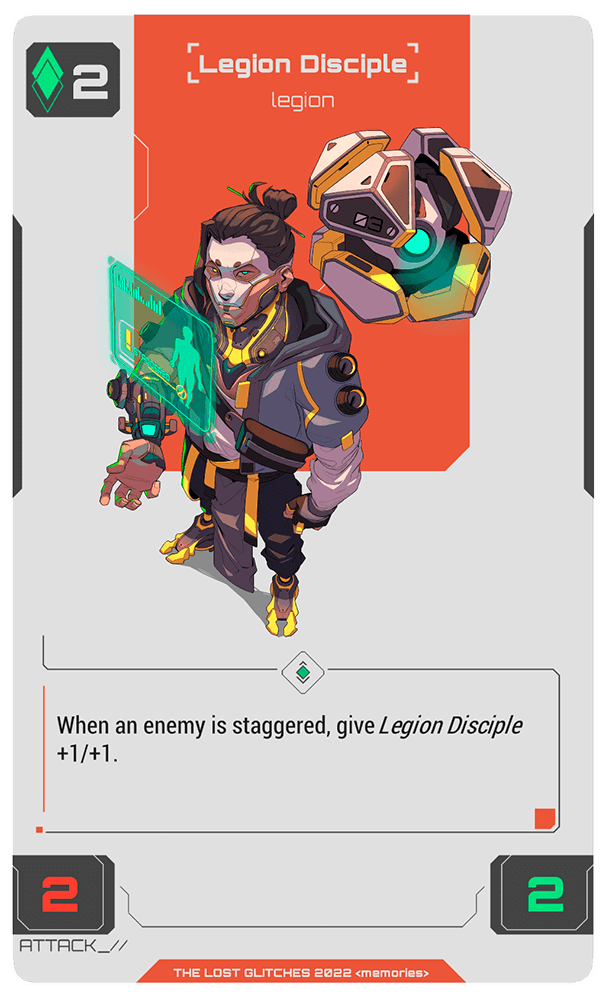
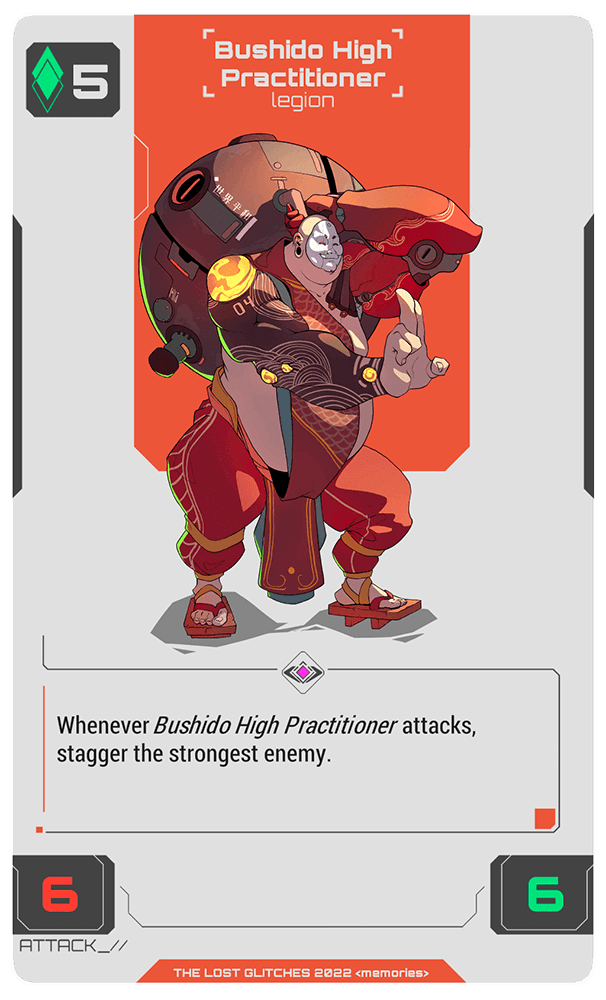
Have you come across other powerful card synergies? Come and discuss them with us on our Discord server!
Outro
It is going to be a lot of fun experimenting with our first set of cards called “Memories” and finding and refining all the types of different decks that we will be able to build on this fantastic journey together with our amazing community! We cannot wait for all the remaining drops that will happen until game launch, each of which will enhance and expand our decks with new, exciting, and beautiful cards!
